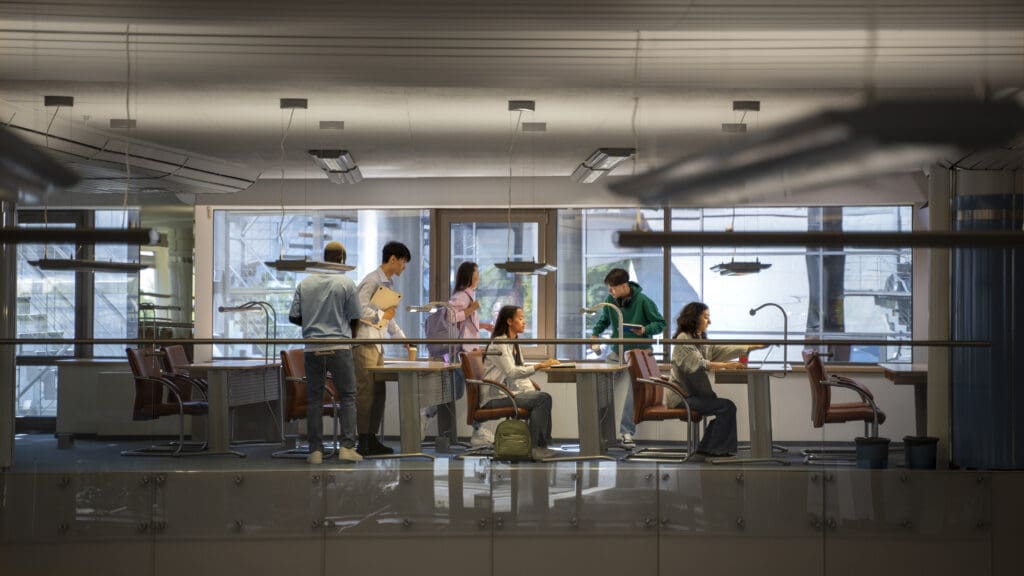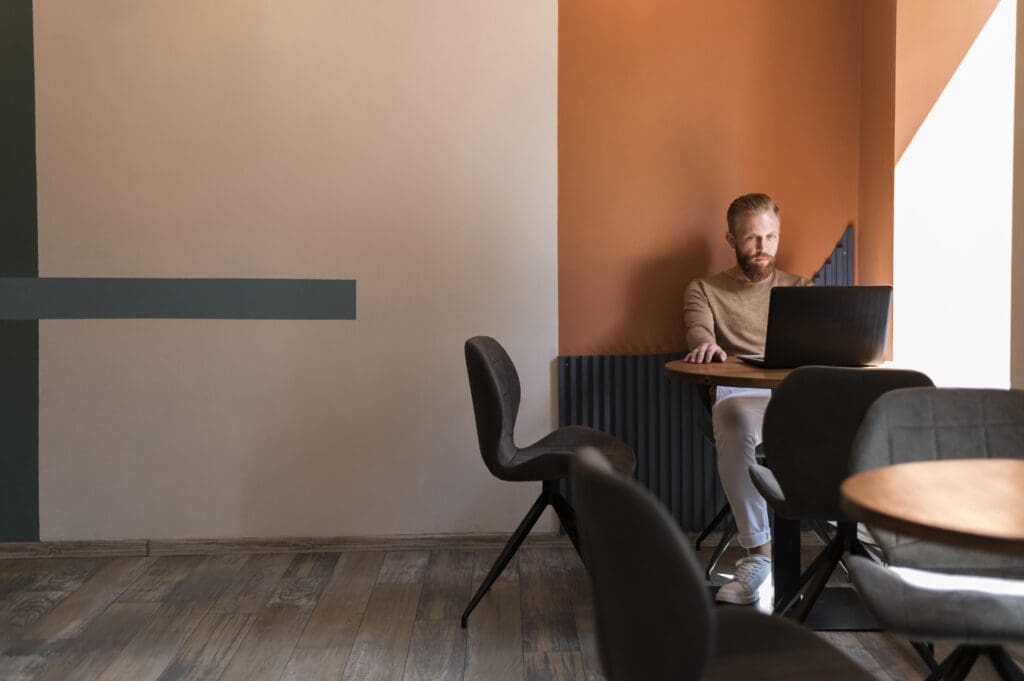Imagine a bustling coffee shop filled with people from all walks of life. Here, vibrant discussions and entrepreneurial ideas flow freely between strangers who have come together to form a unique energy in this shared office space together.

Collaboration fills the air. Typing on keyboards is mixed with notes taken by pens scratching paper, and chatter echoes around the room. Unbeknownst to most, there is a silent symphony playing deep within these walls.
Shared office spaces offer flexibility, networking opportunities, and community that traditional offices may lack entirely. But with the buzz comes a challenge that isn’t often addressed: office noise itself.
Noise takes on many forms – some stimulate the mind while others repel it away. In an office environment where one’s work must thrive despite the constant distraction of sound, professionals must learn how to find harmony in this cacophony.
Quiet Zones to Communal Tables
Step into any coworking space and you’ll be hit with a whirlwind of activity that mimics society’s hustle today. Individuals can be found typing away quietly at their desks in designated quiet zones, or they could be huddled closely together at communal tables having intense brainstorming sessions over lunch breaks. The groundbreaking idea for your next startup could even come from conversations sparked during spontaneous meetings.

In this immersive scene, some people feel challenged and stimulated. Traditional office environments have made us too comfortable, and coworking spaces give them the spark they need to break barriers.
But amidst this chaos is an equally deafening mission: How can we stay productive? And more importantly how do these sounds shape our work experience? Now that is an interesting question. Because while some people love to work against a background of excited chatter, for others, so much noise can be distracting.
Impact of Noise on Productivity
According to the US Occupational Safety and Health Administration (OSHA), loud noise creates physical and psychological stress which makes employees less productive while hindering communication and concentration. Not only that but it could be responsible for workplace accidents and injuries too. An example is that, if an employee has loud background noise to deal with, it may be difficult to hear warning signals.

Many studies have proven the negative impacts of several types of noise on productivity. Cahyani (2020) found out that traffic noise had a negative impact on the productivity of employees in a health office while Deng et al. (2023) found out that without noise reduction even the noise of an air purifier makes people tense and dissatisfied at work.
Experts aren’t the only ones complaining reducing noise levels. Many professionals have echoed these studies, sharing their own experience of how the sound of a bustling shared space can help them stay motivated but also become distracting and even detrimental to their progress.
Navigating Auditory Distractions
To break away from this challenge and adapt to our new working environment today, several strategies were developed. Here are two common solutions:
Noise-Canceling Headphones
One popular sound reduction solution adopted by many professionals is purchasing a pair of noise-canceling headphones. These devices use complex technology to block out external sounds and create a personal bubble of silence. With less background noise invading their ears, workers can focus more intently on their tasks without being pulled away by every sound they hear.

When searching for your pair, experts suggest looking for active cancellation features. Some devices engage in passive noise cancellation. It means that the device fits over your ear in such a way to absorb sound so that it physically blocks out outside sounds, so that you can listen to your audio even at a low volume. On the other hand, active noise cancelling devices create their own noise to cancel out the other noise around you. This noise is called ‘phase inverted sound’.
Personal Sound Zones
Coworking spaces have taken it upon themselves to provide individuals with various environments catered towards different levels and types of tolerable noise. This includes quiet zones where no conversations are allowed – only tapping keyboards or pens grazing paper are heard — while some areas promote louder discussion zones like cafes where you can chat up strangers or discuss projects together over lunch breaks.

These areas can range from soundproof booths to impressive collaborative zones. By offering a mixture of acoustic atmospheres, patrons can take their pick when they need it most. Working on a solitary task? Lock yourself up in a quiet pod. Ready to share your ideas? Make your way to the brainstorming couch!
Apps for concentration
Besides the physical side of things, digital solutions such as concentration-boosting apps have taken off recently. These apps come with features like white and ambient noise, generators, soothing soundscapes and focus timers that help people concentrate. With these tools in hand, users can create their own personal work environments that keep them focused no matter how loud it might get outside their headphones.
Communication Etiquette
Being able to communicate effectively is one way to ensure peace and productivity in shared workspaces. For example, coworking spaces should encourage user feedback about how they find the acoustic atmosphere. Perhaps there are some people who like quieter workspaces, they could be grouped together in a desk clump. Those who are motivated by others can be assigned spaces closer to each other.
Understanding Communication Styles at Work

Coworking spaces hold professionals from all walks of life — meaning they’ll also speak many different languages, too! Being able to identify and respect these styles is crucial if you want an even work environment where everyone’s voice is heard. If you start by talking about what each person expects in the workplace (including noise levels), it’ll be easier to find a happy medium that meets everyone’s needs.
Boundaries for Quiet and Collaboration
Establishing boundaries ensures that both quiet time and collaboration are respected. People should feel comfortable indicating whether they’re open for conversation or would rather be left alone with their thoughts. You could do this by using signs or traffic light-inspired indicators.
Whatever the system may be, establishing these conventions will go a long way in reducing noise and creating an atmosphere where everybody feels safe while working on their own or together. Light and sound are the things we thrive on. With modern technology, we can manipulate these things and harness their power to bring out the productivity among ourselves!


GIPHY App Key not set. Please check settings